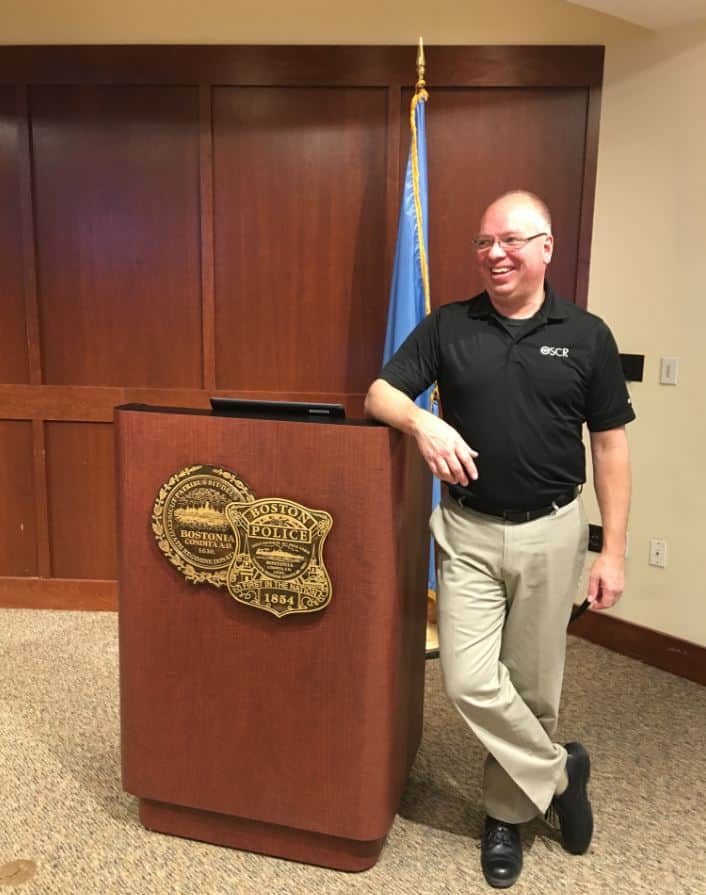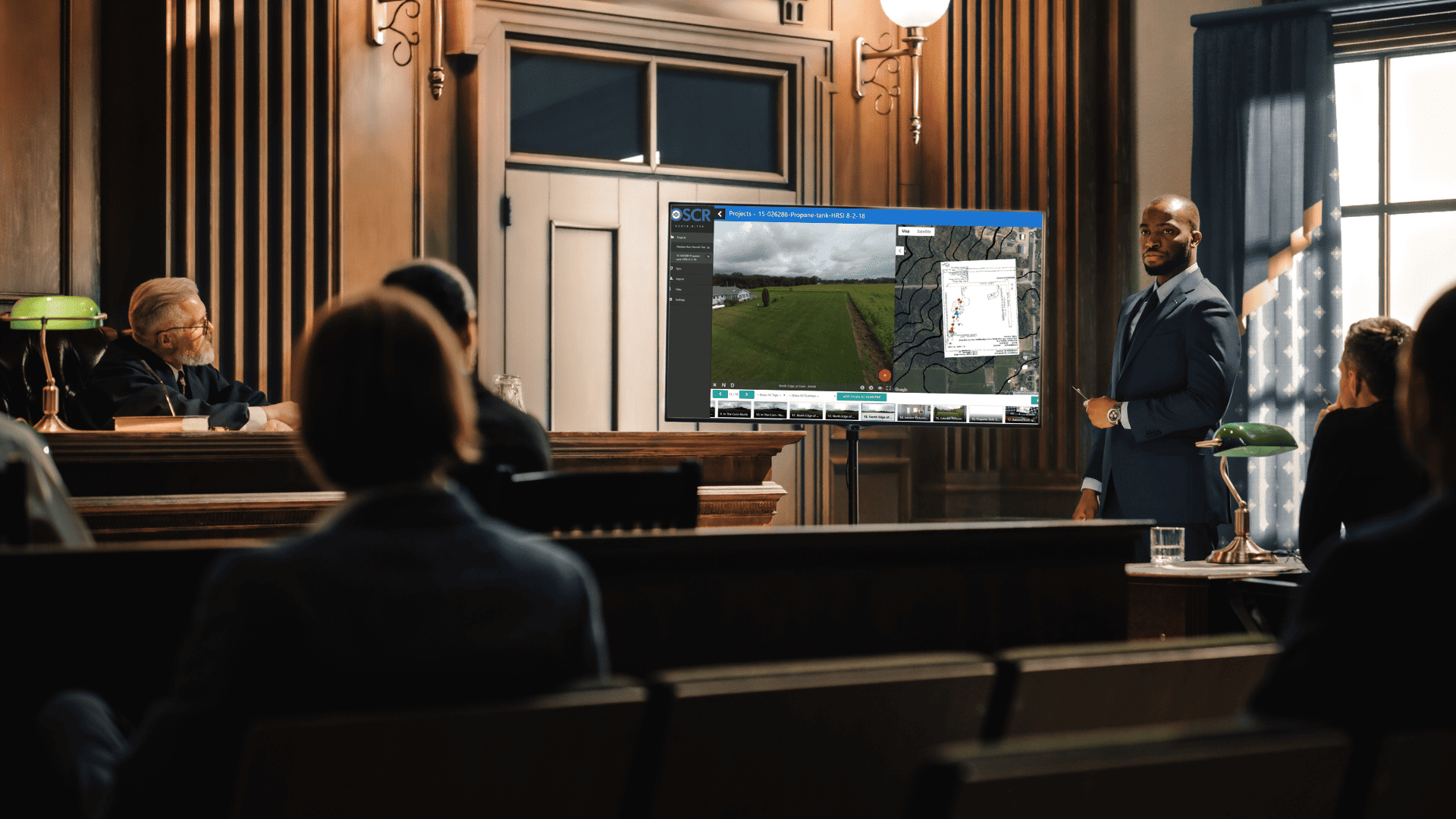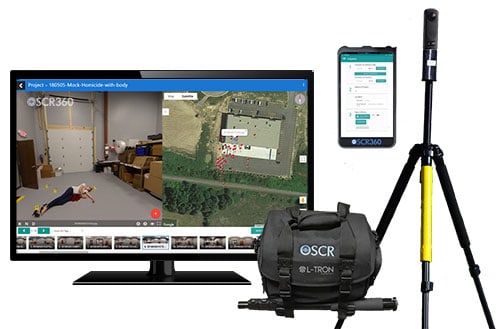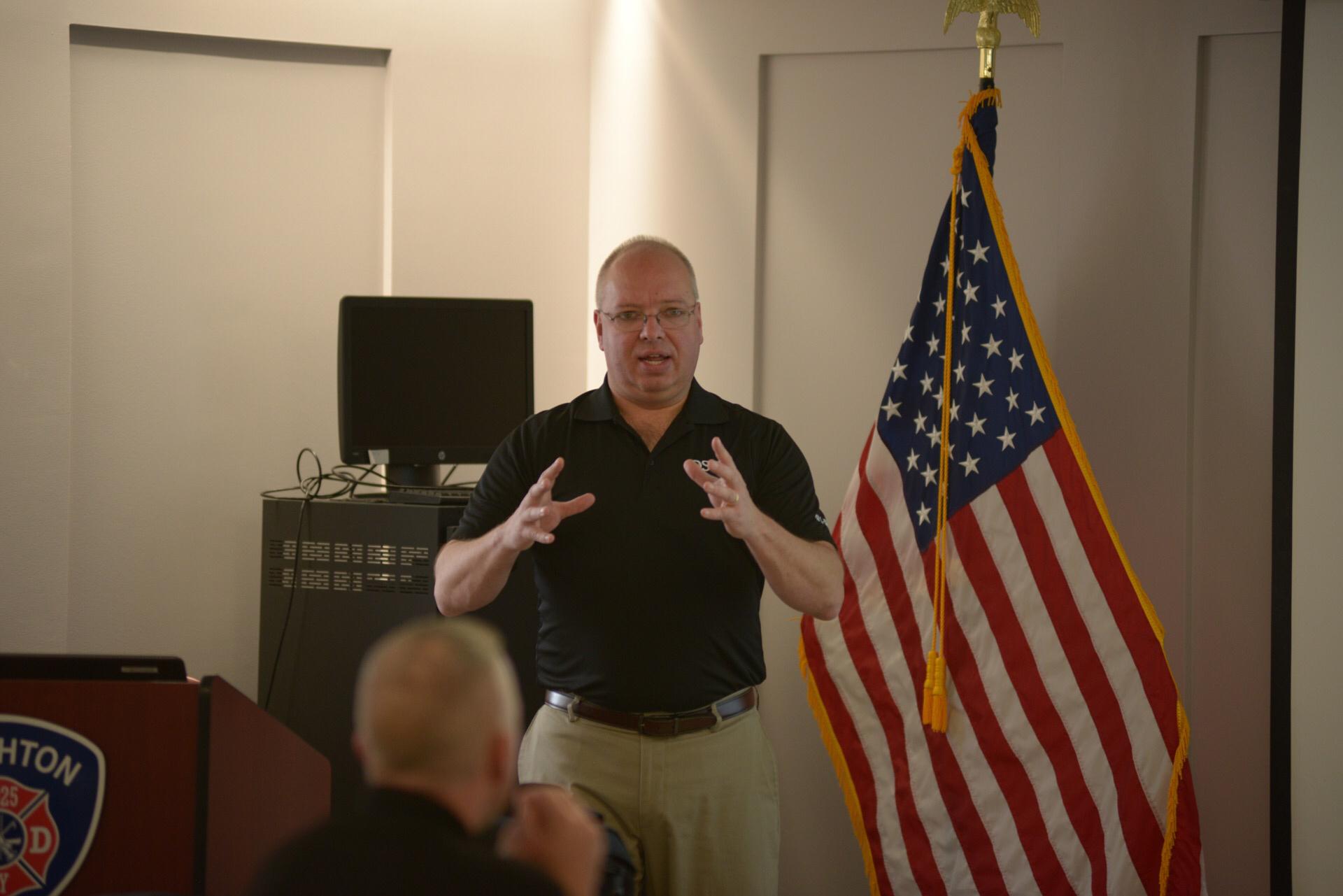If you are a law enforcement officer, there is a good chance you’ll find yourself on the witness stand in a courtroom at some point. After all, expert witnesses play a crucial role within the criminal justice system.
Retired Sheriff’s Deputy Andrew McNeill has testified as an expert witness in court for over fifteen years, most commonly on vehicular manslaughter cases. He continues to testify post-retirement as a private forensic consultant and now shares some practical tips for taking the stand as an expert witness.

Andy’s Eight Tips for Taking the Stand as an Expert Witness
1. Keep At It
This first tip is basic, but the saying, “Practice makes perfect,” exists for a reason. Public speaking in the courtroom can be scary and challenging if you haven’t done it before, but it’s like anything else. The only way to get better at something is to keep doing it.
2. Practice Teaching
Preparing for court should be like preparing to teach a class. Most of the technical language you will be using during your testimony will be unfamiliar to jurors. Plan to use and spell words related to scientific concepts, confusing scenarios, and technical terms to get them on the court’s record, but then define and explain what you mean right away so the jury understands.
3. Review the Case Details
Being prepared is crucial. There will be a time lapse between the investigation and the trial so, as you prepare, study and review the investigation from start to finish to keep it fresh in your memory. Some cases may have 300-400 pieces of evidence. You don’t have to memorize every detail because you can refer to notes for specifics. However, you will want to present yourself confidently and knowledgeably to ensure your credibility with the jury, which can only happen if you are thoroughly familiar with the case.
4. Have a Pretrial Meeting
The jury doesn’t want you to hear you read line for line off your presentation or notes. They want to hear a narrative. One of the best ways to do this is to have a pretrial meeting with the prosecutor. Review the questions they will ask you and discuss the evidence you plan to share. Later, in the courtroom, your testimony will flow seamlessly like a conversation between you and the prosecutor as you share your perspective.
5. Use Visuals
When you are taking the stand as an expert witness, it is vital that the jury members understand exactly what you are trying to convey. This can be difficult using words alone. Visual presentation tools, such as OSCR360, can have a huge impact on the jury’s ability to grasp what you are trying to describe.
When Andy first started testifying nearly two decades ago, the ADA allowed him to come to the podium and show photos as he explained his points. He felt like he was teaching a class with the help of visual aids. Today, he recognizes how OSCR360 can immerse the courtroom audience in the crime scene.



6. Be Conservative
Stick to the evidence. Your job is to be completely objective and meticulous with the jury. If there is something you can’t remember, don’t make it up because the attorneys have your report in front of them and will be fact-checking you as you testify. You can always say, “I need to look at my notes to refresh my recollection,” to ensure your accuracy.
7. Tell the Truth
Unfortunately, there are some expert witnesses out there who may not give a factual opinion. Instead, they give the opinion they are told to give for the right fee. This is unethical behavior and never recommended. An expert witness isn’t there to take sides. Refer to the facts alone and then let the jury decide the outcome.
8. Stand Your Ground
During cross examination, don’t be surprised if an attorney interrupts or challenges you by saying unrealistic things. Just remember that attorneys are not experts. You are. During voir dire, you were established as an expert with education, training, certification, and experience in your field. Don’t second guess yourself or let yourself get flustered despite any attempts to throw you off course. Stick to the facts and your expertise.
Don’t take it personally when a defense attorney starts asking tough questions. Everyone – the prosecutor, the defense attorney, the judge, and the witness – has a job to do. Your job is to give clear, concise, and truthful answers no matter who is asking the questions.
How can OSCR360 help you testify in court with confidence?
Expert witnesses are usually brought in near the middle of a criminal trial. The CSIs, biologists, crash reconstructionists, medical examiners, and other experts come to the stand after the foundation of the case has been set by other witnesses, such as person who called 911 or the first responding officer who took the initial report.
Andy explains, “By the time the expert witnesses begin testifying, the jury has heard a lot of dry details about the case and they’re likely bored to death.”
“Juries have an unrealistic expectation of the physical evidence to expect thanks to TV and movies. There isn’t necessarily a plethora of physical evidence like DNA or a million fingerprints. When the expert witnesses come, it’s the real nuts and bolts of the case.”
Andy has a track record of success when it comes to effectively testifying in the courtroom. In fact, shortly after testifying in a major trial, the presiding NY State Supreme Court Justice phoned Andy and told him, “Your testimony really sealed this case and wrapped it up so the jury could understand.” He then requested that Andy visit a university where the judge was teaching to share his expertise and explain how he worked with the ADA to prove the facts of the case.
So, what exactly makes Andy’s courtroom testimonies so impactful? Well, not only is Andy a gifted speaker and presenter, but he also relies on visuals to further increase the comprehension of his audience. Having access to OSCR360 on one of the computers used by the prosecution or defense attorneys can support and enhance this style of presentation during testimony.
A compelling, yet factual presentation style
In the age of virtual reality and true crime drama, jurors expect instant gratification and flashy technology. OSCR360 presentations have the “wow factor” while remaining completely factual, objective and admissible in the courtroom.
“With OSCR360, it’s easier than ever before because, instead of putting images on an overhead projector, now you can tell your whole story. You can rotate photos and pan around. They’re all seeing the same thing at the same time, so there’s no bias with that. And you can just take them on a walking tour of your whole investigation.”
OSCR360 is an excellent teaching aid, as well. Whether you are explaining a unique crime scene location or clarifying the meaning of a technical term, OSCR360 allows you to show the jury exactly what you are talking about and establishes context for the facts you are presenting. Plus, OSCR360 is compelling enough to hold the attention of the jury throughout your testimony.
Clearly explain the evidence, or lack thereof
During your pretrial meeting with the prosecutor, you can discuss the evidence you found. Yet sometimes, the absence of evidence can be even more telling. With OSCR360 you can show the jury everything – including what’s missing.
“We processed the entire room for latent fingerprints. As you can see, there are some smudges here with zero detail, which may be indicative of someone wearing gloves,” Andy explains. “I might say, ‘There are a lot of surfaces here that aren’t conducive to picking up fingerprints’ or ‘I would expect to have fingerprints all over this glass table but look how clean it is. Somebody cleaned it before we came in.’”
These types of explanations and visual demonstrations set the expectations for the jurors about what kind of evidence they can expect to see. It also re-establishes your credibility by explaining to jurors how it is possible for there to be a lack of evidence despite your thorough and detailed investigation.
Refocus your thoughts and include pertinent details
As you take the stand as an expert witness and present your findings to the jury, OSCR360 can help you stay focused and recall details you may have otherwise overlooked. A virtual walkthrough in OSCR360 is akin to revisiting the crime scene. Everything you saw and experienced in person will come flooding back as you pan around the scene’s 360-degree images. OSCR360 software allows users to incorporate notes, videos and other digital files, which can be helpful for organizing your thoughts on the stand.
With OSCR360, you can walk the jury through the scene, providing context to your supporting evidence and the true and accurate facts of the case.
About OSCR360
OSCR360 is being used by public safety agencies, schools and district attorneys nationwide. OSCR360 is fully admissible, and presenting the evidence with OSCR is effective in the courtroom.